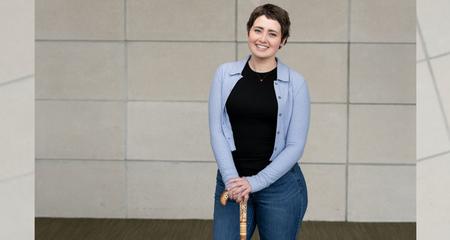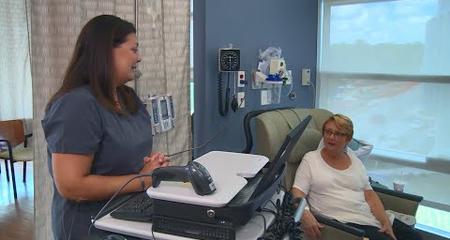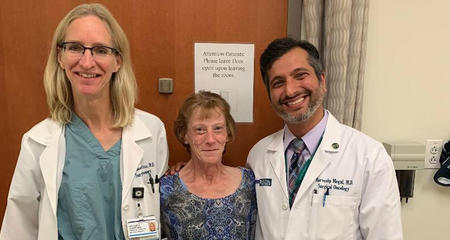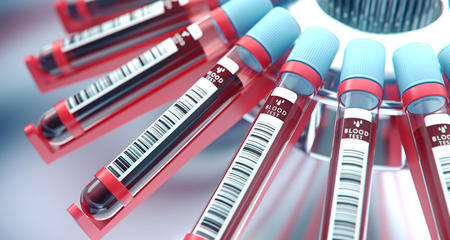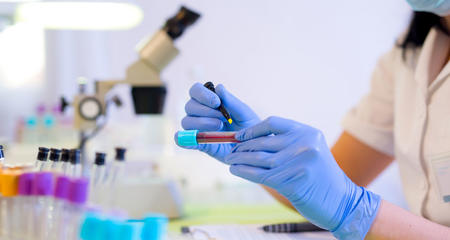After a patient has had surgery to remove a sarcoma, plastic surgeons use specialized surgical techniques to replace tissue and close the surgical wound.
Restoring Appearance and Function of Soft Tissues
The goal of plastic surgery is to restore the most natural appearance and functioning of soft tissues (skin, fat, blood vessels and nerves). The plastic surgeon may use tissue from other areas of the body to provide natural coverage of exposed artificial joints, bones, blood vessels and nerves. The donor tissue may come from the abdomen, thigh or back. When possible, surgery to remove the cancer and reconstructive surgery are performed in a single operation.
Plastic surgery is performed to:
- Replace bone
- Rebuild muscle volume
- Replace fat, nerve and skin
- Fill in the defect created by removal of a sarcoma to prevent the accumulation of fluid or blood and minimize the risk of infection
Tissue Flaps to Provide Natural Appearance
Plastic surgeons use special tissue flaps to provide natural appearing results after sarcoma removal. These flaps, which contain tissue, fat and blood vessels, include:
- DIEP Flap—Deep Inferior Epigastric Perforator Flap—a technique that involves precisely separating the skin, soft tissue and tiny blood vessels (perforators) from the abdomen without removing any of the abdominal muscles. The blood vessels are matched to supplying vessels at the reconstruction site. The tissue removed for the DIEP Flap is virtually the same as tissue taken for a cosmetic tummy tuck (abdominoplasty).
- ALT Flap—Anterolateral Thigh Flap—a skin flap taken from the side of the thigh with the main blood vessels coming from the deep femoral artery.
- TDAP Flap—Thoracodorsal Artery Perforator, a skin flap taken from the back.
Microsurgery for Reconstruction
Most of these procedures involve microsurgery, which requires the use of a microscope and fine sutures to sew arteries and veins together. The success rate for reconstruction of sarcoma patients is greater than 95 percent over the past five years. In any given year, these types of procedures are performed more than 100 times each year. Surgery may last several hours.
Acellular Dermal Matrix to Cover Joints
In addition to using flaps to cover a wound after a sarcoma has been removed, plastic and reconstructive surgeons may use acellular dermal matrix to cover joints and provide protection for other vital structures such as blood vessels and nerves. Acellular tissue matrix is a specially prepared tissue replacement material created from human skin. Processing of this material removes cell components that can lead to both rejection and infection.
Traditionally, muscle flaps with skin grafts were very difficult to modify because of the components — muscle and skin. With the trend towards perforator flaps, (flaps composed of skin, fat and blood vessels) these flaps can be transferred and, after three months of healing, can be modified by a thinning procedure in which fat is removed from the flap.
This allows the flap to contour more appropriately to the arm, leg or any other area of the body where it was placed. If necessary, this thinning procedure can be repeated to obtain the most natural appearing, functional result.
Virtual Visits Are Available
Safe and convenient virtual visits by video let you get the care you need via a mobile device, tablet or computer wherever you are. We’ll gather your medical records for you and get our experts’ input so we can offer treatment options without an in-person visit. To schedule a virtual visit, call 1-866-680-0505.
More to Explore
